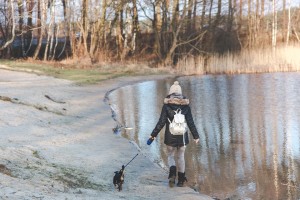Latest Posts
- Have a purpose when backyardingAugust 5 2021
- Study: Time outside alters our microbiomeAugust 4 2021
- Happy National Mutt Day from Mo-MoJuly 27 2021
- New home? Avoid these common mistakes in your yard.July 26 2021
- Infographic: Plan a backyard staycation this summerJuly 22 2021
Categories
Archive
December 27th
New Year’s resolutions to help you & your hound stay healthy

Many of us are making New Year’s resolutions in anticipation of the start of 2019. Healthy eating habits and saving money are traditional resolutions. But if you have a dog, TurfMutt encourages you to consider your canine when you’re setting your goals for the New Year.
Here are TurfMutt’s top pet-related resolutions.
Spend more time outside. Your dog’s favorite room at your house is your outdoor living room. Embrace being an “outsider” with your dog by setting aside a certain amount of time each day to be outdoors with your pup. Play a rousing game of fetch (snowballs are super-fun to try to catch!), take training sessions outside, or teach your dog to play hide-and-go-seek in your backyard. Studies have shown being in nature makes people happier and healthier – and you only need to watch your dog’s tail wag to know how good being outside is for her spirit! (Read TurfMutt’s advice for keeping your pet safe during cold weather.)
Take more walks. A recent study shows people who own a dog walk on average 22 minutes more per day than those who don’t. But it’s easy to let the daily walk slide, especially during the cold, gray days of winter. Recommit to a regular exercise routine with your dog in 2019. Take a walk around your neighborhood or visit the local park for a change of scenery (and scents!).
Make plans to improve your family yard. Winter is a great time to map out family yard improvements you want to take on this spring. Do a living landscapes inventory to see what’s working for your family and your pets and what needs to be improved in the New Year. Then, develop a list of to-dos you can tackle when the weather warms up. Plan to add more green space so your pet has more living landscape to run around in, and plant trees for shade. Check out the USDA’s plant hardiness zone map to determine which plants are most suitable for your area. Doing this now will make shopping at your local nursery more productive later.
Plan to plant for pets & pollinators. TurfMutt also encourages you to consider wildlife when planning your backyard improvements. What migrating birds fly overhead? Which butterflies and other wildlife stop by in your neighborhood and yard? These important members of our ecosystem need places to rest, recharge and find food. Identify plants, trees and shrubs that will attract and provide habitat for your local wildlife.
Avoid toxic plants that can be harmful to your pet. One final word of advice, spend a little time this winter getting to know the plants that are toxic for dogs, like carnations, chrysanthemums, daffodils, hostas, ivy, lilies, morning glories, tomatoes, and tulips. For a complete list of plants to avoid when you’re making improvements, visit ASPCA’s list of nontoxic and toxic plants.
Get more information and ideas at SaveLivingLandscapes.com.





